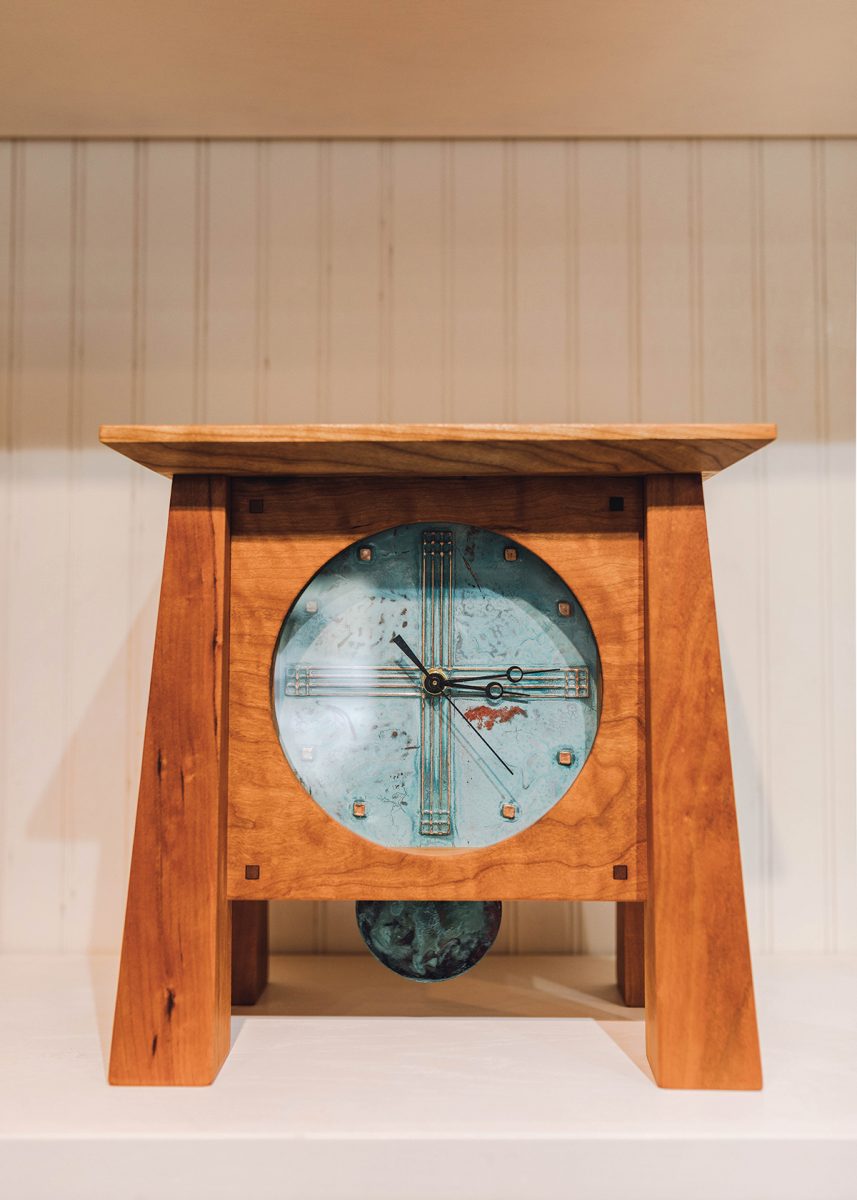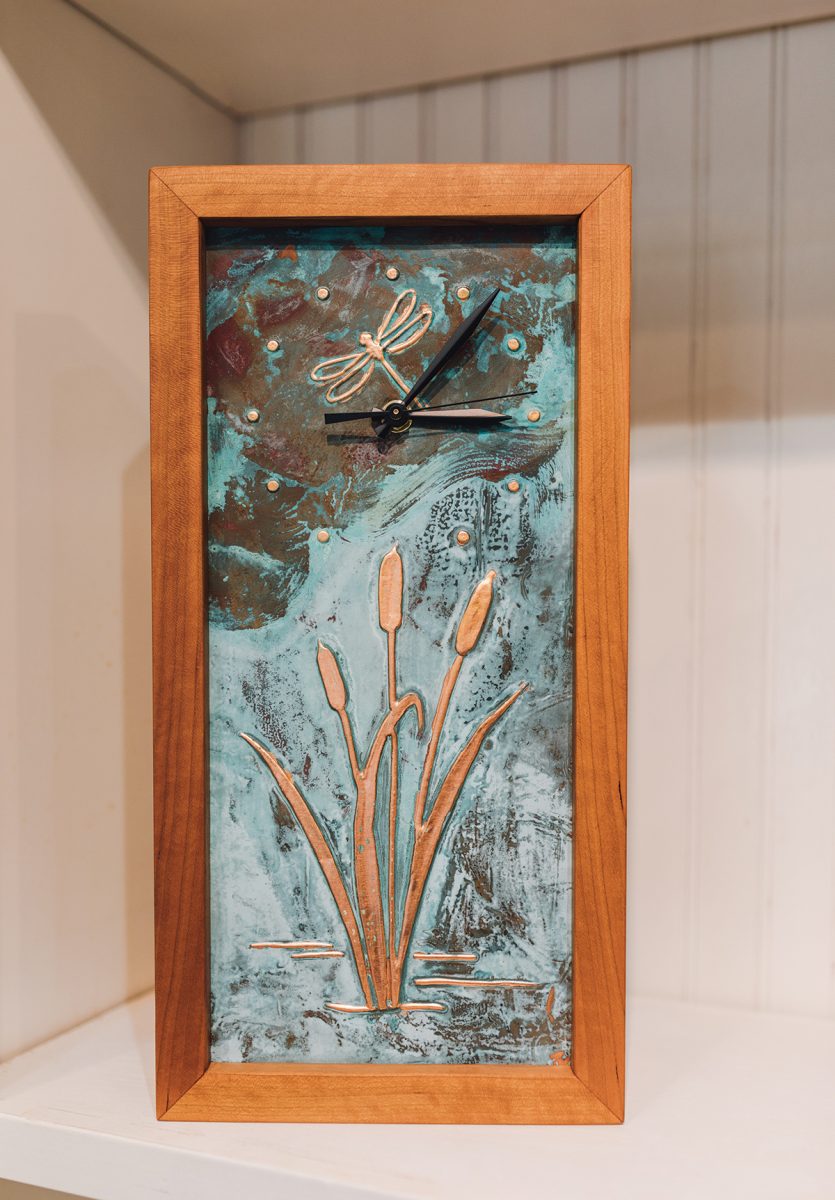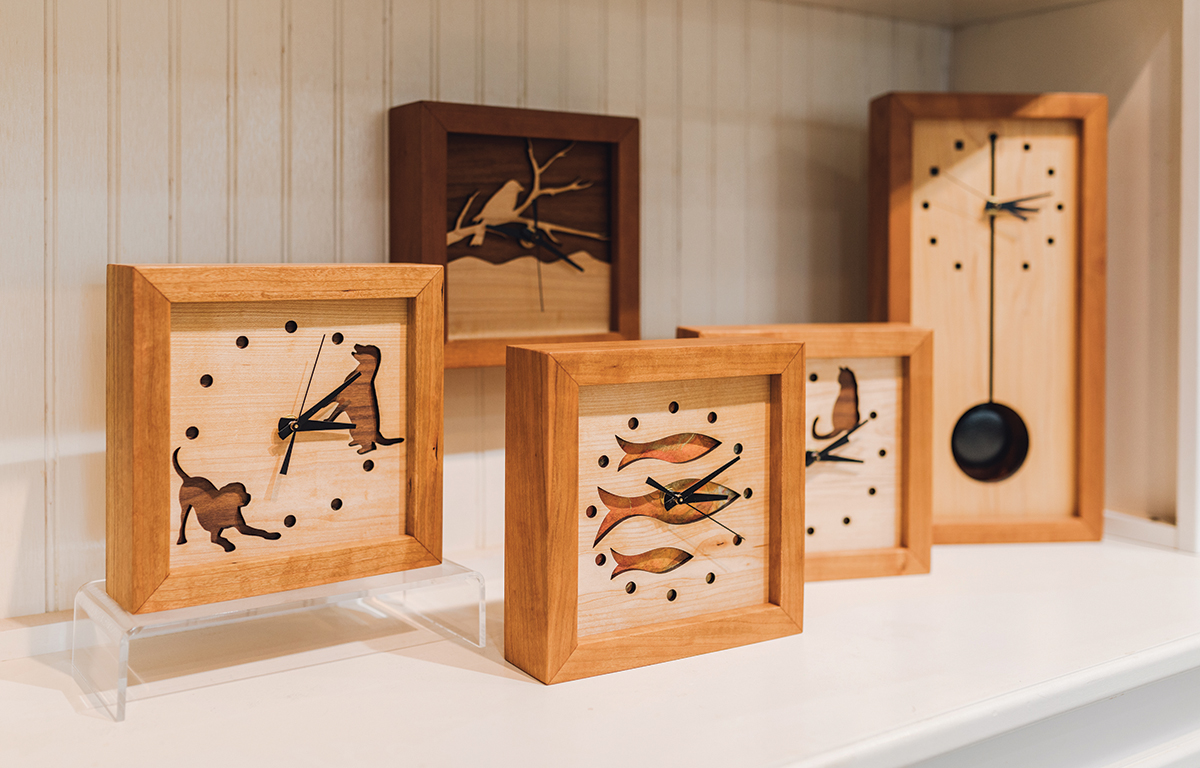The scrap pile offered the clue to success

Desmond Suarez senior, right, learned woodworking from his own father. Now he runs his family business with the help of his two sons, including Devin Suarez, left.
Photo by Rachel Pressley
“I love what I do and love getting up every day and going to work,” declares second-generation woodworker Desmond Suarez, owner of Sabbath-Day Woods. He is well aware that deriving so much satisfaction from a job is rare. He’s grateful for that, and for being blessed with a successful business despite facing repeated economic headwinds.
Suarez, who learned his craft by helping his father as a boy, has stayed on that path for more than 35 years.

“I designed commercial office furniture for most of my adult life, and my intention was to transition into high-end custom furniture.” But as he was starting to make that shift, the Great Recession hit, with plans of its own. “We were doing home furniture and that basically dried up. Then we found that people were more willing and able to purchase smaller goods.” Because making large pieces of furniture inevitably leaves a woodworker with unused scraps, Suarez looked to his scrap pile to literally pick up the pieces and move forward. “I didn’t want to burn them or throw them away, so I began making clocks and serving boards — and people liked them.”
That nimble and crafty transition allowed him to reshape his business model. Suarez revived his family-run woodworking shop by handcrafting elegantly functional home artwork including clocks, cutting boards, and lamps.
“In many ways this is more efficient,” he says. “We don’t waste anything. People put our sawdust in their gardens or burn our scraps for firewood. Making smaller items can be more rewarding, too, because now we have them in a lot more homes. I know this because I moved into a house in a new neighborhood, and my neighbor took me inside their home and showed me one of my pieces they had collected.”

Photo by Rachel Pressley
Design is his favorite part of the process, and Suarez says that his main inspiration comes from the nature and beauty of the wood itself. “I like to amplify and show its beauty, and my designs have always been simple and clean.” He cites the American Shaker and Arts and Crafts movements, along with the work of Frank Lloyd Wright, as artistic influences. Each piece he creates is designed to be around for generations, and Suarez is professionally committed to environmental stewardship and exclusive use of American-made, sustainably sourced materials.
Sabbath-Day Woods remained a small enterprise, but its market grew into one that now spans more than 250 stores and galleries in the United States and Canada. Then came 2020.

Photo by Rachel Pressley
“Everything really dried up in March and April,” Suarez says. “But now we’re busier than ever, heading into our busiest season of the year, and I’m very thankful.”
Sabbath-Day Woods American Made Functional Art, 722 Freedom Drive, Canton. Products are available at Grovewood Gallery (111 Grovewood Road, grovewood.com), Pisgah Inn (Milemarker 408 on the Blue Ridge Parkway, pisgahinn.com), The Swag (2300 Swag Road, Waynesville, theswag.com), Silver Fox Gallery (508 North Main St., Hendersonville, silverfoxgallery.net), Seven Sisters Gallery (117 Cherry St., Black Mountain, sevensistersgallery.com), in shops at Biltmore Estate’s Antler Village and Winery (biltmore.com), and in the shops of the Southern Highland Craft Guild (southernhighlandguild.org). For more information, see sabbathdaywoods.com.
